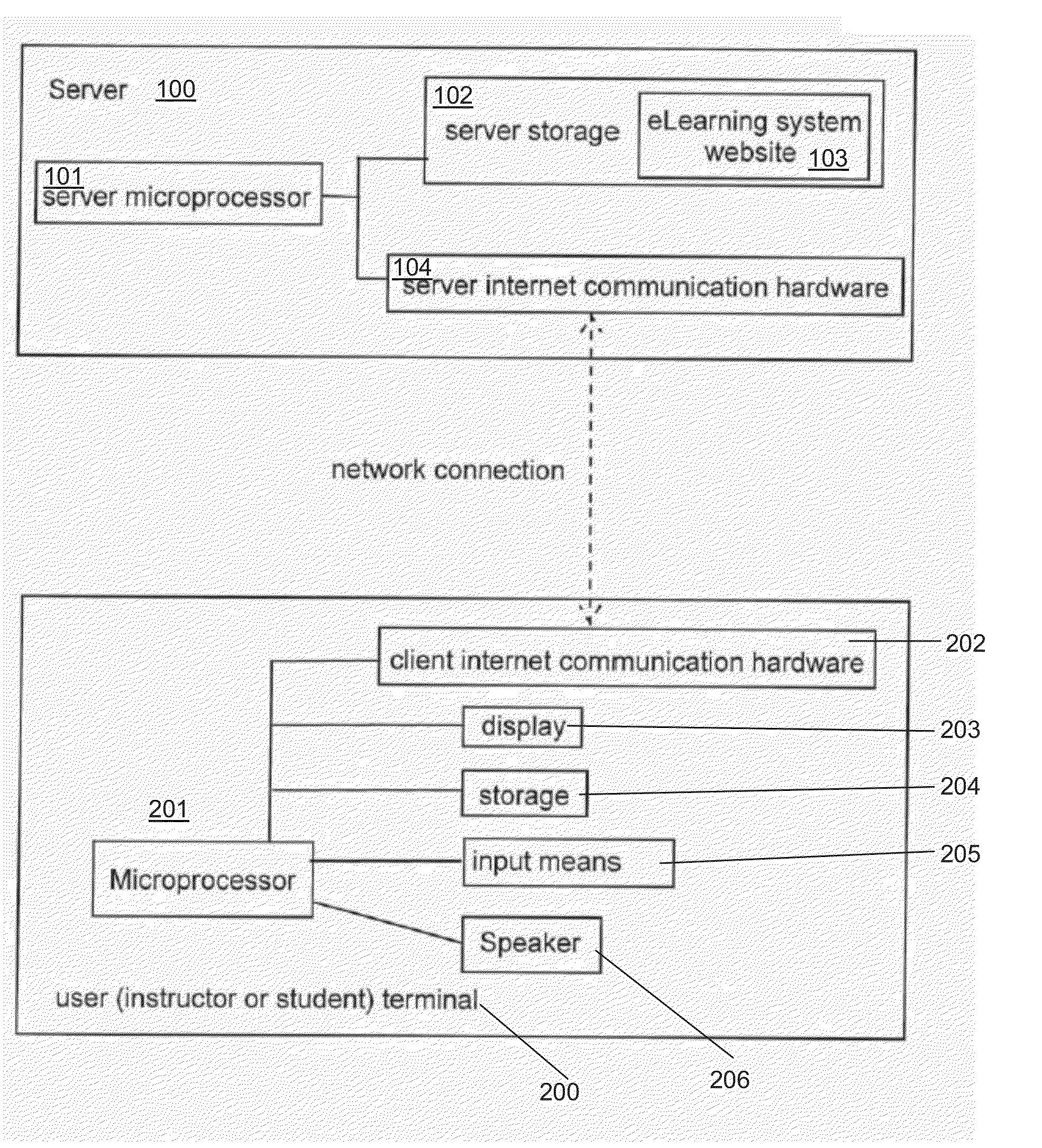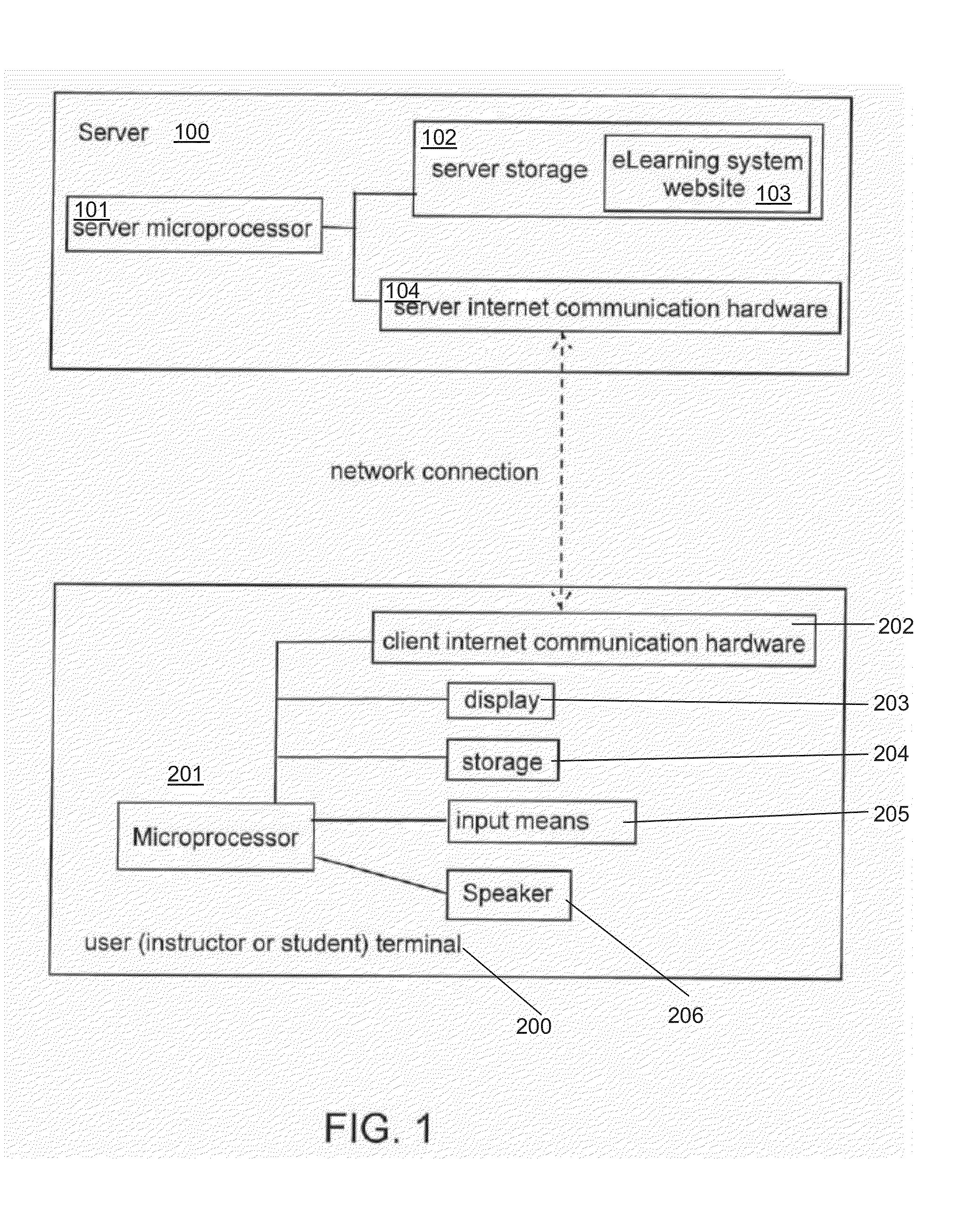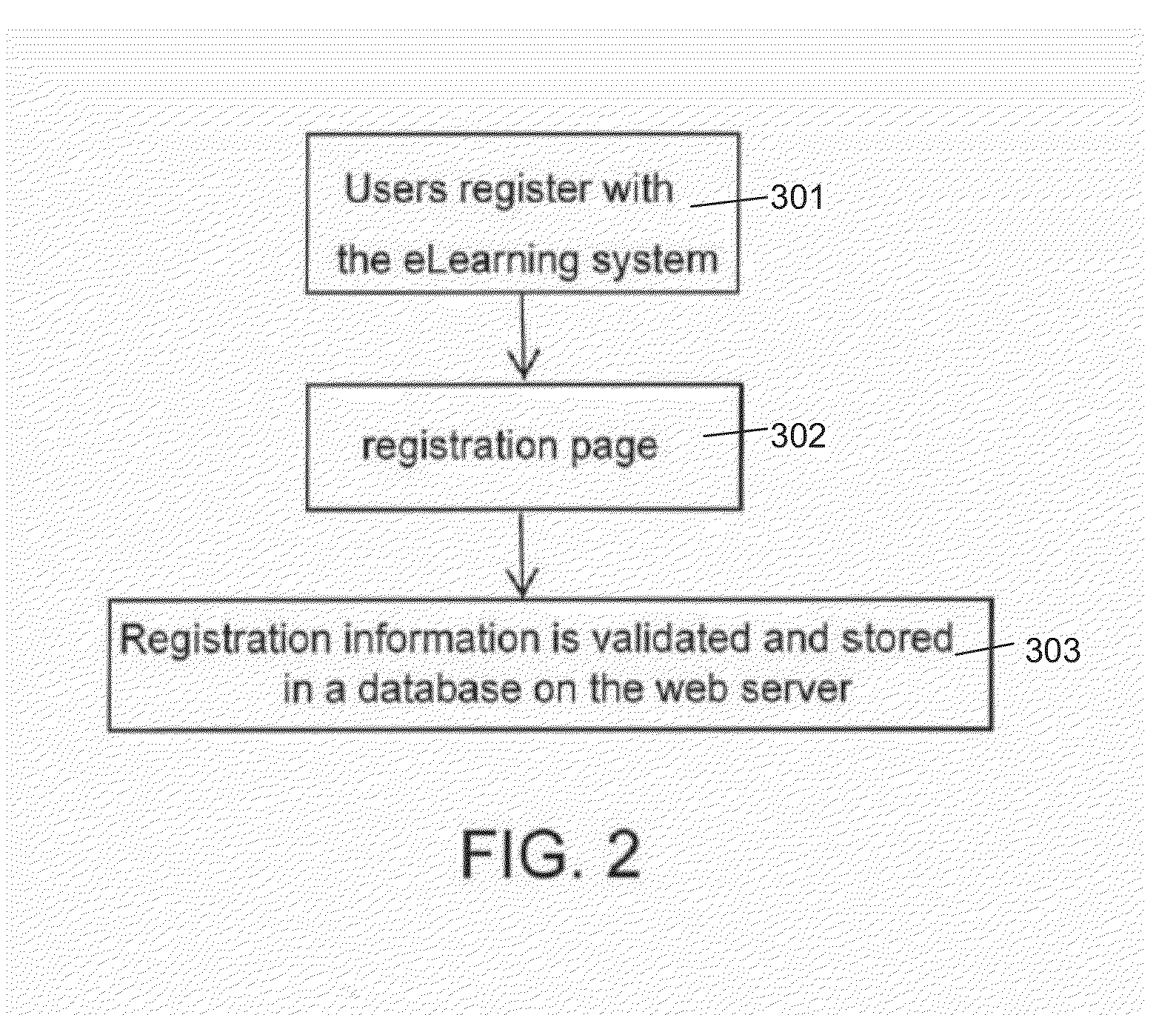Knowledge evaluation system
a technology of knowledge evaluation and knowledge, applied in the field of network based electroniclearning (elearning) system, can solve problems such as learning problems, inability to collect data, and inability to provide information for discrete tasks performed by students by current software tools
- Summary
- Abstract
- Description
- Claims
- Application Information
AI Technical Summary
Benefits of technology
Problems solved by technology
Method used
Image
Examples
Embodiment Construction
[0028]Referring now to FIG. 1-20, the present invention features a network based electronic-learning (eLearning) system, especially a network based electronic-learning (eLearning) system to collect, process, evaluate, report, visualize, and analyze learner self-reported data. Instructors and students may interact with each other via a website hosted on a server.
[0029]First, students and instructors need to sign-in or register with the eLearning system 301 via a registration page 302 of the site. Registration comprises entering the user's first name, last name, email address, username, password, and role (student or instructor) into a web-based form. Optionally, a cellular phone number, cellular phone service provider, and TWITTER (or similar social network) username can be entered into the form. When the form is submitted, the form information is validated and stored in a database on the web server 303.
[0030]Users log in to the eLearning system via a login page 400 of the site. Logg...
PUM
 Login to View More
Login to View More Abstract
Description
Claims
Application Information
 Login to View More
Login to View More - R&D
- Intellectual Property
- Life Sciences
- Materials
- Tech Scout
- Unparalleled Data Quality
- Higher Quality Content
- 60% Fewer Hallucinations
Browse by: Latest US Patents, China's latest patents, Technical Efficacy Thesaurus, Application Domain, Technology Topic, Popular Technical Reports.
© 2025 PatSnap. All rights reserved.Legal|Privacy policy|Modern Slavery Act Transparency Statement|Sitemap|About US| Contact US: help@patsnap.com



